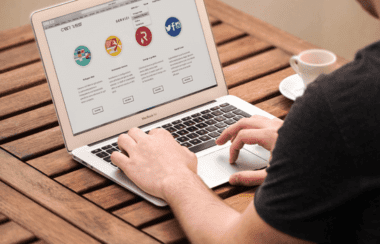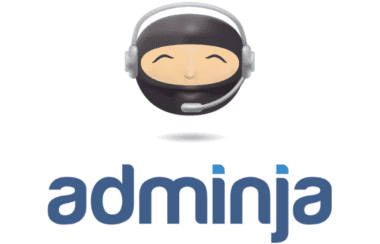Five Platforms for Sharing Your Services with the World!
By Jena Kroeker

Have you ever felt like you had something to say but doubted that people would listen to you? Or has someone ever called you an expert, and you thought, “Who, me?”
When starting out as a freelancer, these doubts can creep in while we’re planning to promote our brand and business. We may have heard Bill Gates’ declaration that “Content is King,” and understand that sharing content can boost our credibility. But it can feel daunting to decide what to say and how to say it. People who share content seem to know stuff, and how do I know whether I know stuff people want to hear?
Well, take comfort in the fact that we often know more than we think. Even if you don’t see yourself as an expert, you do have knowledge to share and simply need the right content platforms to share it.
I sometimes feel hesitant to share content because I was raised not to give unsolicited advice. So I often feel a bit of a “Who do you think you are” kind of doubt when I share tips. I’m also somewhat introverted and quiet in a professional setting, so if we were talking about this subject in person, I’d be more likely to listen to you rather than speak. If I’m put on the spot, I can get flustered and shy, but then later that night, at 3:00 a.m., I’ll think of the perfect words I could have said. That’s why blogging has become the right platform for me. It gives me time to process my thoughts and choose my words before expressing them in writing.
So when you’re planning your own business promotion, think about how you like to express yourself and how your audience likes to receive content. I love this quote by Maya Angelou:

This is an important idea to keep in mind when striving to build credibility with your target audience. The way you share content can either build trust or tear it down. It can make people feel validated and cared for, or misunderstood and overlooked. When we plan blog posts for FreeU, we typically go through this process:
– What topic addresses the needs and concerns our audience has right now?
– How does our audience like to receive our content?
– What can we give our audience as takeaways they can use to build their freelance business?
As Moss Clement explains in his article “8 Powerful Ways to Build Brand Trust on Social Media,” you might need to experiment to discover which content strategies are most effective in your area of competence. He says,
“The idea is for you to discover the type of content that gets you more engagement. Among the contents you’ve created, which ones are more popular? Find out and create more of such content. Whenever possible, though, it’s best to relate that content back to your core business. After all, we’re not doing this for fun are we? We’re trying to build relationships with potential and current customers so when they need our services, we are top of mind.”
With that in mind, let’s take a look at some of the top content platforms for promoting your brand and business.
Blogs
According to an article by Jodi Harris, blogging “continues to lead the pack when it comes to reliably driving returns on the content investment.” She includes some data points from the Content Marketing Institute’s 2017 research that support this fact, namely, “80% of B2B marketers and 75% of B2C marketers include blogging among their current techniques” and “52% of B2B and 51% of B2C marketers expect that blogging will be their most critical tactic for achieving success in the upcoming year.”
That’s one of the reasons why you’re reading this post on our site right now. At FreeU, we blog regularly and value this medium’s versatility. Blog posts can be posted on our main website, shared on social media, and emailed to our subscriber list. We can also use a blog as a place to communicate content created on other platforms. We’ll talk more about that below.
eBooks
Now, this is one of the content platforms that embodies the idea of giving your audience takeaways. If you provide an eBook as a free offer on your website, for your audience it’s like going to Costco and getting some free samples. They get a taste of your knowledge and services in a format they can “take home” and digest at their leisure. It might also keep them coming back to your site to see if you’re offering any more goodies. My husband has been known to go back to the same staff person at Costco and hope they won’t recognize him so he can get seconds of a particularly good sample. ☺
In her article, “3 Ways to Use eBooks in Your Content Marketing Strategy,” Caoimhe Gaskin explains:
“One unique strength of eBooks is that they’re downloadable. Instead of feeling like yet another blog post or video, a downloadable eBook feels far more like a real object of value. This means you can use eBooks as lead generation tools, offering your users the chance to opt-in with their contact information in exchange for your information. Writing an eBook also gives you the ability to showcase your authority on a subject in a greater level of depth than a blog post allows.”
Podcasts
So far we’ve talked about written content, but what about audio? If you enjoy communicating verbally, podcasts might be the content platform for you. One of the benefits of podcasting is that people can multitask while they’re listening to a show. They can subscribe to a podcast and access it on their device online or download for offline listening while they’re exercising, driving, dusting the living room, or any number of activities.
Because of the nature of this medium and users’ habits, Heidi Cohen offers some great recommendations in her article, “Audio Content: How To Reach Your Busy Audience.” She says we need to make our information attractive for people to listen to and that we should “think like a talk radio show host.”
You can reach a large audience when you record something that people will want to switch on in the background while they’re going about their day. And you can be creative about the format of your podcast. You can conduct one-on-one interviews, host panel discussions, present information in a lecture format… The sky’s the limit!
Facebook Live
As you may already know, Craig Cannings, co-founder of FreeU, hosts a Facebook Live session once a month. Facebook Live continues to grow in popularity among both private users and businesses. As content platforms go, it’s great for connecting with your audience in an interactive and immediate way. As the presenter is speaking, the audience can react to the presentation and type comments which the presenter can respond to either verbally or in writing.
Users can be notified when a page or a person they’re following goes live so they can tune in to the broadcast. And after the session ends, the recorded video can remain posted on a profile or page to be viewed on demand.
Facebook Live has gained even more functionality by adding its own screen-sharing feature that eliminates the need to use other software. This gives you greater freedom to plan online presentations or tutorials for Facebook Live. It’s also beneficial for anyone who may be uncomfortable appearing as a talking head and feels greater confidence presenting through slides or other visual content.
YouTube
YouTube is the 3rd most visited site after Google and Facebook, with 400 hours of video uploaded every minute, according to this article by Kit Smith.
Like Facebook Live, YouTube allows live streaming, either through spontaneously jumping online or scheduling live events to broadcast to your audience. During live events, you can also interact with viewers by answering comments while you’re on air. You can also create videos at your leisure and upload them. So if you prefer to prepare and edit your video content beforehand, you can express your message that way.
The advantage of presenting tips or giving a tutorial through video is that your audience gets to see you as a real person, and you can address their needs on the fly (in the case of live streaming). Valuable communication is also achieved through tone of voice and nonverbal signals that are missing from written content.
Repurposing Content
Above are just a few of the top content platforms you can use to get your message and services out to the world. There can be lots of movement between different types of content, so you can express yourself in the medium that’s best suited to you and then repurpose your content into another format.
Here are some examples:
– You can write a blog post and create an attractive infographic that illustrates the main points. This infographic can be offered as a free download on your blog and posted on Social Media channels like Facebook, Pinterest, Twitter, Instagram, etc.
– You can record a podcast and then have the content transcribed and repurposed into a blog post or eBook.
– You can create a Facebook Live or YouTube video and then post it on your blog with a written introduction and a timestamp summary of the main points.
– You can repurpose a blog post into an article to publish on Medium or LinkedIn to reach an even wider audience.
These are just a few ideas. As you’re planning your content strategy, remember to find that sweet spot between your area of competence and your audience’s area of interest. And be creative! Online content platforms thrive when they’re full of high-quality original content, so share what you know in a way that’s true to who you are, and your audience will be drawn to your authenticity. And the wider community of freelancers will benefit from your knowledge and innovation.
Sometimes we don’t know how much we know until we give ourselves permission to share it. So start sharing, and you’ll see just how knowledgeable you are.
Now we’d love to hear from you. What are your favorite ways to communicate content, and what challenges have you faced when planning your content strategy?









































































































